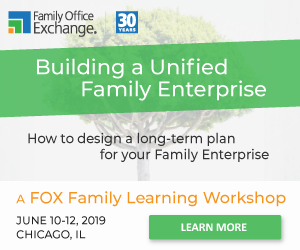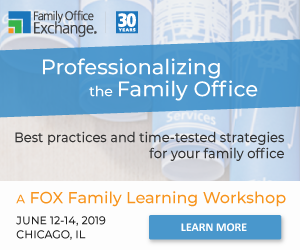Developing a Family Enterprise Governance Model
Date:
Apr 21, 2019

The Need for a Formal Governance Process
As the family grows, decision-making moves from the dining table to the board room and family members are often reluctant to formalize their decision-making process. Each branch of the family wants to broaden their options rather than to narrow their options. Written ground rules for decision making makes some family members feel confined by the formality. Only gradually do stakeholders come to trust the ground rules for group decision-making, as these rules prove themselves valuable over time when uncertainty or crisis erupts. Without guiding principles and a predictable decision-making structure, the family cannot function efficiently, and the lack of a decision-making process may result in missed opportunities, or worse, the family enterprise may disintegrate.
“We measure the strength of our clan by the number of family members who are actively engaged in some aspect of our family’s enterprise.”
- FOX Member
- FOX Member
When families first develop a formal governance process, it typically involves separating the business of the family from the business of the business. A Family Council functions informally when the family meets around the lunch table after the business board meeting, when external advisors to the business are not a part of the meeting. As the business grows and the family grows, a family office may be formalized to address the financial endeavors of the family, and a philanthropy board may be formalized to oversee the philanthropic initiatives that are of interest to the family. A formal enterprise governance model typically evolves in stages over time, and by the third or fourth generation, the enterprise is a complex system.
Source: Family Office Exchange Research
Important functions have proven to be a Family Assembly for all owners and spouses, bringing all family voices together; and a Leadership Council or Executive Committee, overseeing various subcommittees of the Board (for strategic planning/vision setting, leadership development and succession, and for financial auditing and compensation review). In complex systems, multiple boards operate to make decisions for each part of the enterprise, and leadership is typically shared by family members from each branch, supported by experienced external advisors to ensure that a broad perspective encourages the family to grow and develop new visions.
“We recognize every generation is a first generation in building its own view of the future together.”
- FOX Member
- FOX Member
The decision-making process develops over time, based on historical family practices and preferences. As one FOX member commented, “Family governance is far more complex than corporate governance, because it involves developing consensus across disparate branches of a family.” Decision-making requires quick minded owners to wait patiently while less experienced family members analyze the various alternatives. Even when each branch of the family speaks through the voice of one representative leader, the group decision is only as solid as the commitments made by each member of the family. When families grow very large and branch differences are replaced by age diversity across branches, the voice of the 30 year olds must be heard by the 50 year olds and the 70 year old owners, and developing a shared vision of the future requires a lot of consensus building efforts.
This blog post is excerpted from the FOX members-only whitepaper, "Taking the Long-Term View of the Family Enterprise," which documents the characteristics of a family enterprise and provides a framework for you to consider as you manage the transition from a business-centric family to a family-centric enterprise.


